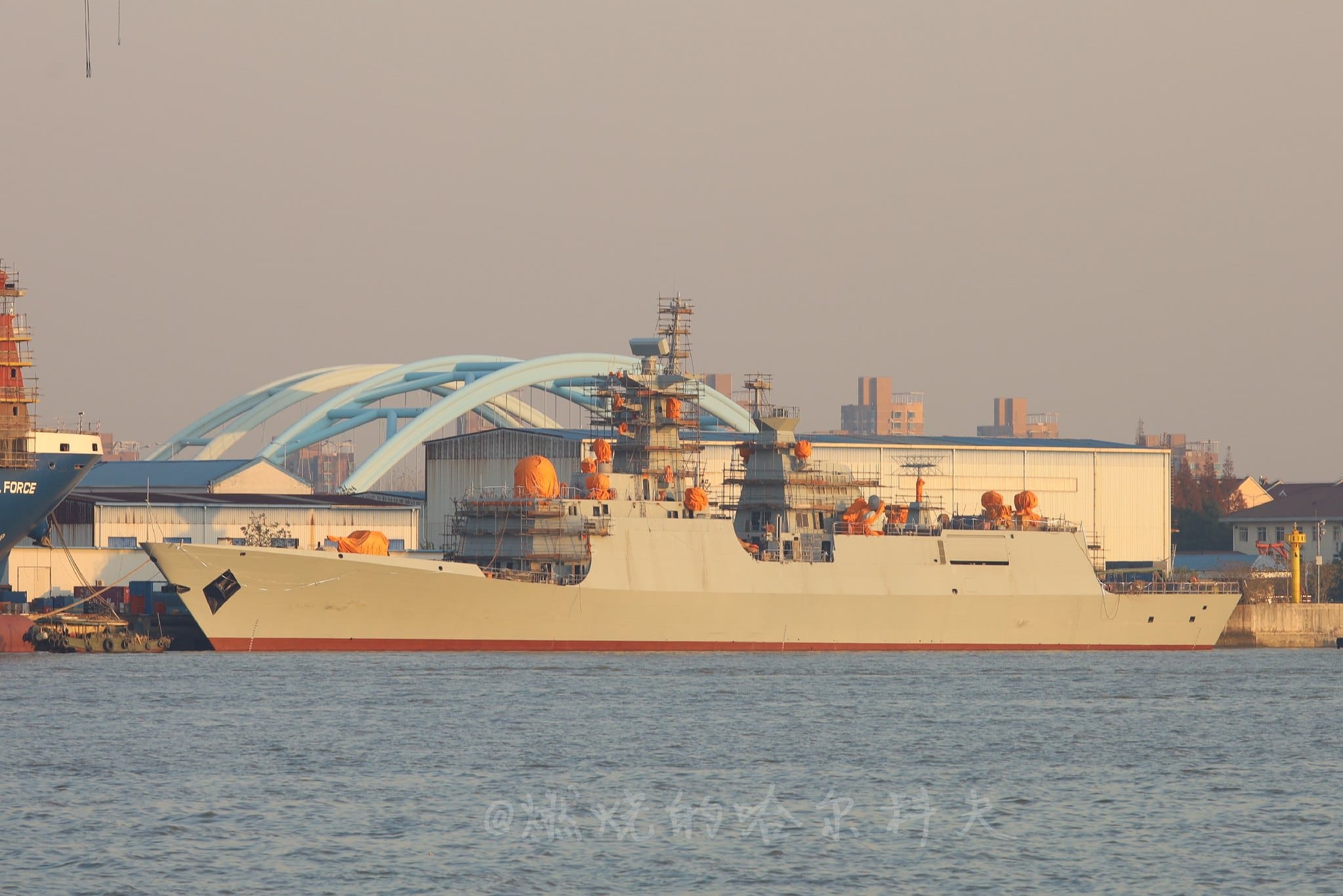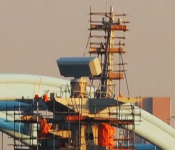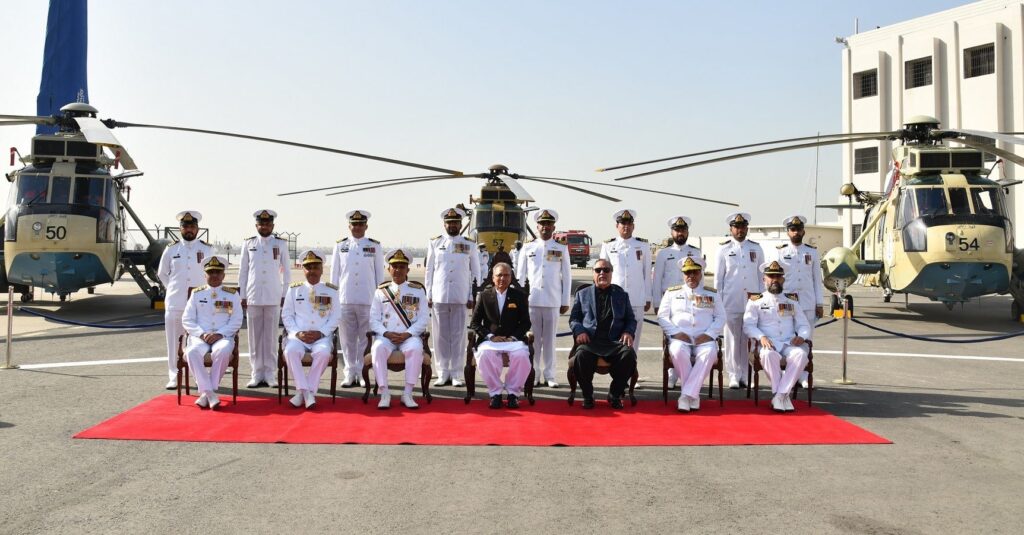Again this is
HIS assumption, and he has no evidence for this.
A Chinese military blogger has answered this question which alludes to a doctrinal thinking;
The outside world has noticed that the 054A/P frigate radar system is more advanced than our own -054A frigate. For example, the former is equipped with SR2410C multi-function active phased array radar, and the latter is also equipped with Seahawk S/C frequency sweeping array three coordinates. radar. Many people may wonder why the export-oriented naval radar is more advanced than our own-use radar?
The answer is that we don't need it.
Our self-use Type 054A frigate is a second-line main ship, mainly performing maritime patrols, escorting fishing, ocean escorting and other tasks. In many cases, the Type 054A frigate needs to perform tasks alone, such as the escort mission in the Gulf of Aden. At this time, the radar needs to be able to cover the predetermined airspace in a short time, so that the commander can grasp the complete battlefield situation. Although the Seahawk S/C radar is a frequency-swept array, it has two beams to achieve high and low direction coverage. In this way, the Seahawk S/C radar is not as good as the SR2410C radar in terms of a single target, but the space coverage capability is stronger than the latter. In many mission environments, the Seahawk S/C radar is stronger than the SR2410C radar. Because the 054A frigate is replaced with the SR2410C radar, it is bound to require the meter wave radar to be installed. This will affect the ship's endurance and self-sustaining ability, but it will give people the feeling that the gains outweigh the losses. Therefore, we see that the SR2410C radar has been successfully developed long ago, but this is the reason why the Type 054A frigate has not been equipped for a long time.
As mentioned earlier, the Pakistan Navy does not have high requirements for the endurance and self-sustainability of ships. On the contrary, after the Indian Navy is equipped with the BrahMos supersonic anti-ship missile, the Pakistani Navy feels like a bear. The position of the Seahawk S/C radar still uses mechanical scanning. The target cannot be confirmed when it is detected for the first time, and the second and third laps are needed to confirm it. Therefore, it is a bit weak to fight against the BrahMos supersonic anti-ship missile. However, the Type 054A frigate acts with the formation during wartime. As an inner ship of the formation, this shortcoming is not particularly prominent. The 054A/P frigate is the main ship of the Pakistan Navy, and it will face the BrahMos missile directly. Since it can be supported by early warning aircraft, maritime patrol aircraft and other ships during wartime, the SR2410C radar is of greater value to the Pakistani Navy.
Here are some more posts on the reasoning behind the radars from a major Chinese defence forum;
The fact that the 054A/P also needs to have the VHF radar also point the SR2410C doesn't have that much of a range, and its designation seems to suggest it runs on C-band which also isn't a range focused choice for a frequency band. The Type 382 is likely to have much better search range and volume than the SR2410C, but the SR2410C is also likely to have a much higher update and tracking rate than the Type 382, which points out the radars don't have the same mission profile. Even if the SR2410C is an AESA, the array itself is quite small which reduces its receive gain, and if you can run that off a Type 056 corvette, then its power requirements isn't that high either, and is comparable to the older Type 360 search radar.
I think the SR2410C is much better suited for tracking and targeting supersonic missiles that are within range of the radar, such as Brahmos, but lacks the power to detect stealthier targets at range hence the VHF radar on the back.
I do not think the new PLAN 054A will copy this layout the 054A/P has. If you are going to put an SR2410C that means a VHF radar is going to be on the back and I don't see the "wire mesh" you see on the 052DL being on top of the 054A's back hanger, and which I would expect to be filled with SATCOMs given the ever growing number of satellite constellations the PLAN is requiring their ships to link with.
You are going to need a radar that has a much better tracking ability than the Type 382, which is this radar's weakness, in addition to having pulse compression and frequency agility, also a problem with the Type 382. But you also need it to have a similar range at least. Not the least, you want the radar to be able to detect LO objects better.
The Pakistan Navy is not likely to face the same kind of aerial opposition as the PLAN. They are more concerned with the Brahmos, which is a fast mover low flyer, so you need something more optimized for tracking a fast moving target lower in the water. The SR2410C fits that bill better. Compared to the Type 382, its a better radar for tracking targets near or on the water surface, which means also means from helicopters to small littoral combat vessels.
Simply said, both radars have pros and cons, the nature of which points to these radars having a different mission profile from the other.
The only way the PLAN would accept the SR2410C is that your air defense and radar picket mission profile for the 054A would have changed (re-adapted/evolved). But if the concept or doctrine for the 054A remains unchanged, then it is not suitable.
You contrast that to the dual sided radar, each side is equal in dimension in both X and Y. This thing is meant for volume search, both high and wide, much closer to what you would expect for the Type 382. This thing is also meant to deal with high flyers, such as bombers like B-52s to HALE drones.













